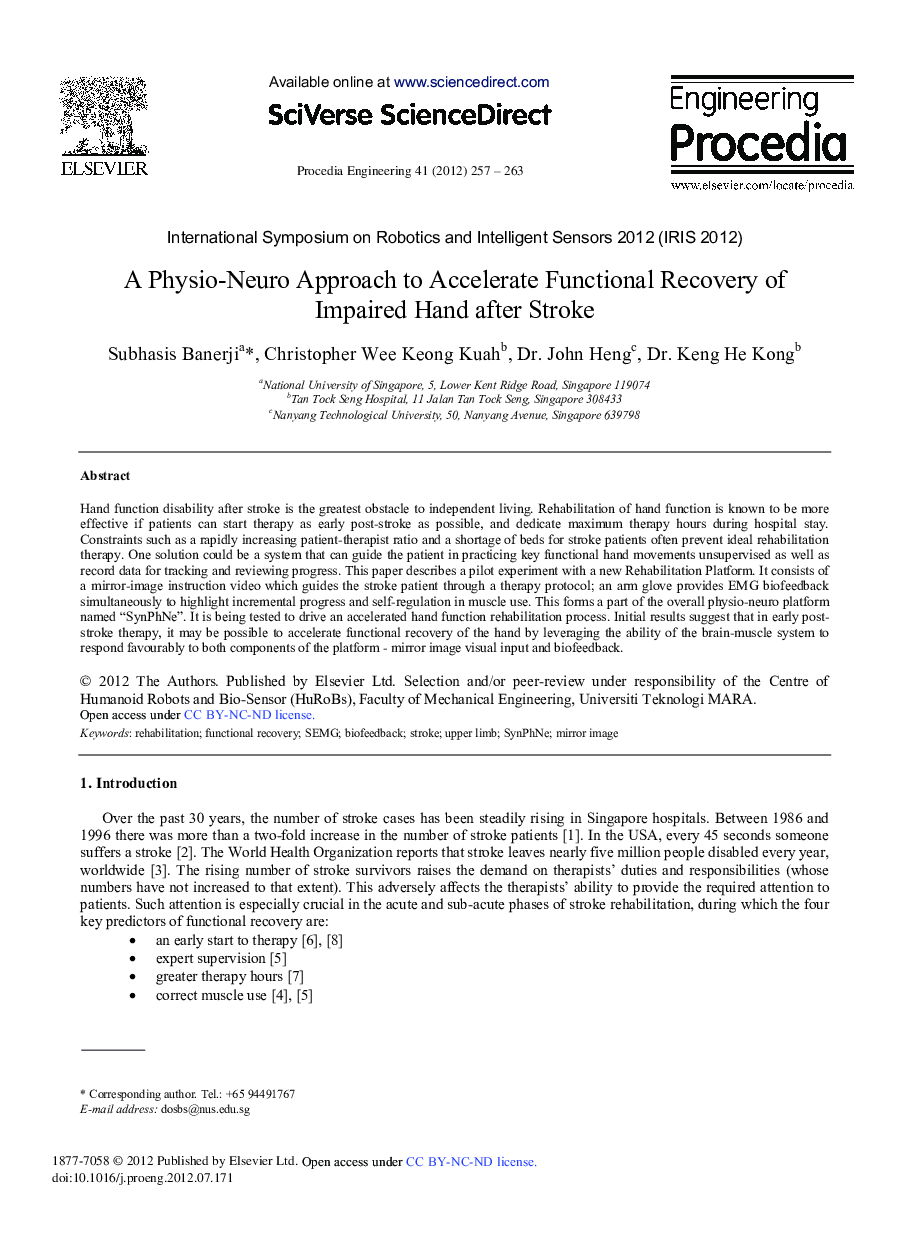| Article ID | Journal | Published Year | Pages | File Type |
|---|---|---|---|---|
| 861105 | Procedia Engineering | 2012 | 7 Pages |
Hand function disability after stroke is the greatest obstacle to independent living. Rehabilitation of hand function is known to be more effective if patients can start therapy as early post-stroke as possible, and dedicate maximum therapy hours during hospital stay. Constraints such as a rapidly increasing patient-therapist ratio and a shortage of beds for stroke patients often prevent ideal rehabilitation therapy. One solution could be a system that can guide the patient in practicing key functional hand movements unsupervised as well as record data for tracking and reviewing progress. This paper describes a pilot experiment with a new Rehabilitation Platform. It consists of a mirror-image instruction video which guides the stroke patient through a therapy protocol; an arm glove provides EMG biofeedback simultaneously to highlight incremental progress and self-regulation in muscle use. This forms a part of the overall physio-neuro platform named “SynPhNe”. It is being tested to drive an accelerated hand function rehabilitation process. Initial results suggest that in early post-stroke therapy, it may be possible to accelerate functional recovery of the hand by leveraging the ability of the brain-muscle system to respond favourably to both components of the platform - mirror image visual input and biofeedback.
